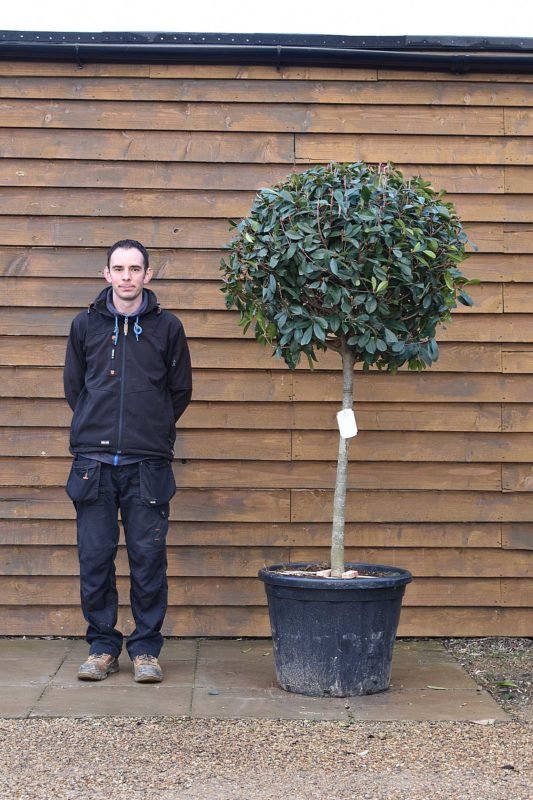No products in the basket.
When it comes to sculpting trees and shrubs into living works of art, certain plants work better than others. This guide covers the best topiary trees that take well to creative trimming and training to achieve the perfect topiary shapes. Whether you’re clipping cubes, cones, spirals, or any form you can imagine, these trees can handle the shears without protest.
What are the best trees to use for topiary?
When choosing trees for topiary, it is crucial to pick ones that can be easily shaped and pruned. Various trees have different qualities that make them suitable or not for topiary. Here are the top recommended shapes for impressive topiary.
Pinus Watereri Bonsai

The Pinus Watereri Bonsai is a popular choice for topiary enthusiasts.
This dwarf cultivar of the Chinese Red Pine has a compact growth habit that lends itself well to shaping and pruning. Its short needles and irregular branching pattern allow creative styling into globes, spirals, and other intricate forms.
This versatile tree is an excellent option for both beginner and experienced bonsai artists.
Yew (Taxus baccata)

With its slow and steady growth habit, the versatile evergreen yew is the perfect plant for crafters who want to shape intricate topiary designs.
Its dense foliage can be pruned and trained into a multitude of forms, allowing gardeners to sculpt masterpieces that stand the test of time.
So if you’re seeking a living canvas to make your mark, look no further than the yew.
Euonymus (Euonymus Japonicus)

The evergreen shrub Euonymus Japonicus is a versatile landscaping plant that can add unique beauty to any yard or garden.
With its glossy, dark green leaves that resemble leather in texture, Euonymus offers year-round visual interest. Euonymus can be pruned and trained into all sorts of intricate shapes.
This architectural plant is the perfect way to add geometric structure and living artwork to garden beds, borders, and containers. Its sculptural possibilities are endless.
Red Robin Plant (Photinia)

With their glossy green leaves adorned with bright red tips, these compact shrubs and trees make for striking privacy hedges and eye-catching topiaries.
Their petite foliage lends itself beautifully to sculpting and shaping, allowing you to trim them into lively lollipop standards or any form you desire.
Whether you prefer geometric patterns or animal shapes, their brilliant colours and amenable nature will help your creative visions come to life in the garden.
Holly (Ilex)

With its shiny green leaves and bright red berries, Holly (Ilex) makes an eye-catching addition to any topiary display.
This popular plant is a topiarist’s dream, growing slowly and requiring only occasional trimming to maintain its sculpted shape. The striking colour contrast between the dark green foliage and vivid red fruits ensures that a Holly topiary will stand out in any garden.
So if you’re looking for an easy-care option to add some sculptural flair to your garden, Holly is a top choice that delivers year-round visual interest.
What is the best Buxus for topiary?
When it comes to creating stunning topiary shapes, the choice of Buxus species is ideal.
English boxwood (Buxus sempervirens) is a classic for intricate topiary designs. Its small, dense leaves respond beautifully to clipping and shaping. This hardy evergreen maintains its form well over time. Just be aware that boxwood can be prone to blight in some regions.
For more whimsical shapes, Korean littleleaf boxwood (Buxus sinica var. insularis) is a great choice. The tiny leaves lend themselves to creating elegant, fine-textured forms. Slow-growing, this variety needs minimal trimming to keep its shape.
If you seek durability, try American boxwood (Buxus sempervirens Suffruticosa). Its thick, leathery leaves make it ideal for larger topiary pieces that will withstand weather fluctuations. This tough plant can handle frequent shearing too.
What is the best shrub to shape into a ball?
When it comes to sculpting shrubs into round, spherical shapes, gardeners have several excellent options to choose from.
But one type of shrub rises above the rest for its pliability and lush foliage; we would recommend the boxwood. This classic landscaping plant is prized for its ability to be clipped and shaped into geometric forms.
Their naturally rounded form takes readily to shearing and training into a smooth, round ball. So for those looking to try their topiary skills at shaping shrubs into robust, rolling forms, boxwood is the clear winner.
With the right care and maintenance, this shapely staple of formal gardens will have you mastering the art of the shrub sphere in no time.
Are you thinking of growing your own topiary garden? Check out our wide selection of topiary trees at Olive Grove Oundle today!

